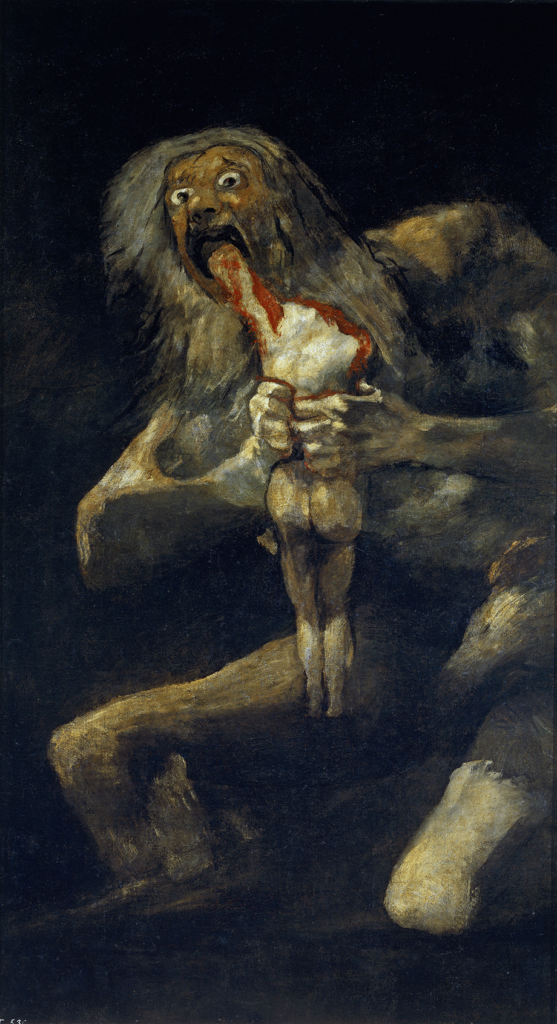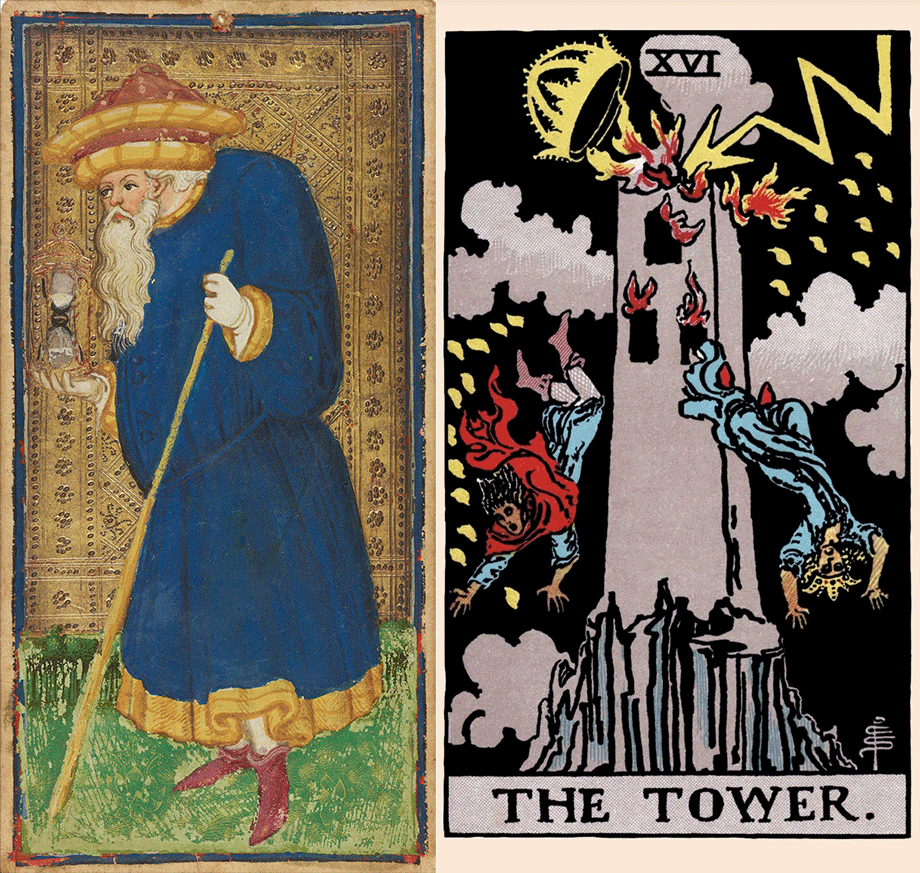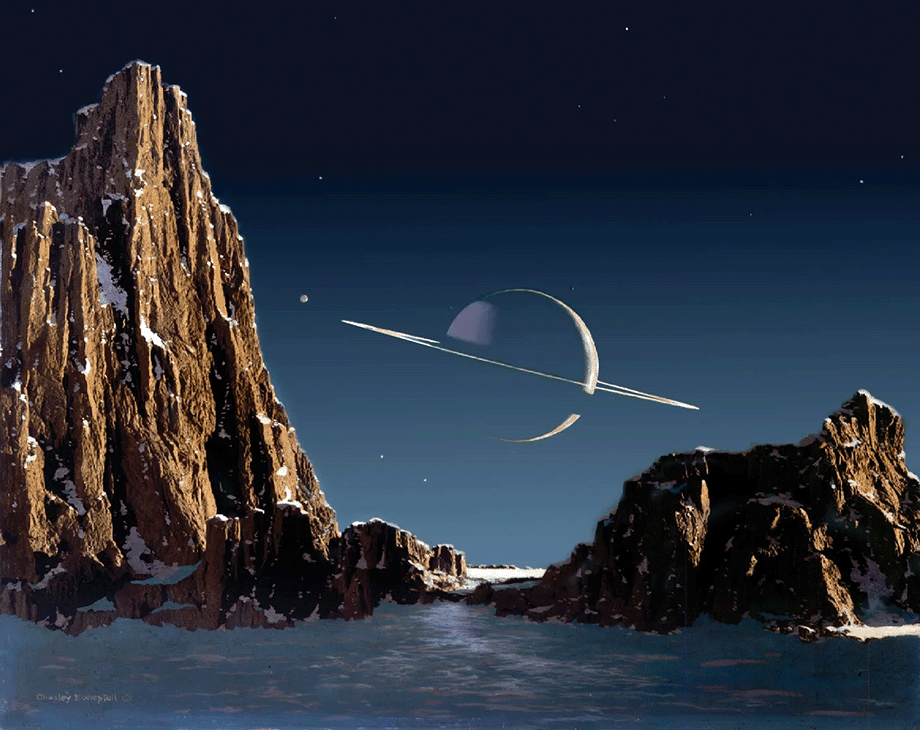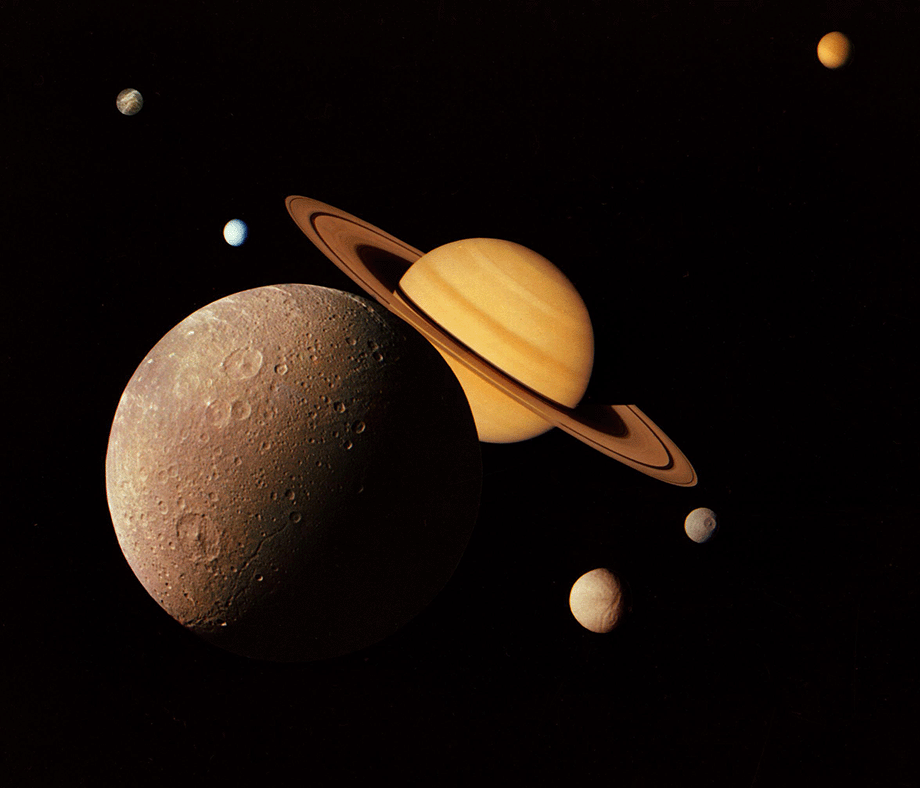Yesterday, at just before 9 AM at my location, the planet Saturn returned to Pisces.
The significance of this is personal to me, because Saturn was in Pisces when I was born, though I have to wait another year for this plodding ancient god to reach that point.
But as Saturn is the outermost planet generally visible to the naked eye, and therefore the last of the great Wanderers known to the ancient astrologers of Mesopotamia, it’s entrance into the last sign of the zodiac carries a good deal of mystic import.
Yes, certainly, there are at least three more planets out there (Pluto is a planet, Degrasse-Tyson can bite me) that modern astrologers use in their horoscopes and calculations. Yet there are some significant considerations for perhaps demoting their importance.
First, they’ve only been known and applied to astrology for a couple of hundred years, so despite them being named after elder gods, they’re newcomers on the scene. Certainly, their invisible influences were there throughout our human history, but if no one took notice of them before they were discovered and their orbits tracked and added to the ephemeri then how much influence did they actually have, hmmm?
Additionally, because their orbits are very distant, and they move through them very slow, the changes in sign are very gradual, and aspects formed are usually more dependent on the travels of their speedier siblings.
Uranus, next in line after Saturn, has an orbit of around 84 years. This means that in many cases a person may not live long enough to have a Uranian return. It spends about 7 years in each sign, enough to be noticed, of course, but if we are waiting for the full cycle through signs and houses, well, it’s going to take a while.
Neptune and Pluto, who flip-flop for furthest planet have even longer cycles. Neptune’s is 165 years, and just under 14 years in each sign. Pluto at 248 years spends just a bit over two decades to get through a single sign. It’s not likely we’ll see a Neptune or Pluto return in our lifetime, so astrologers typicaly talk about their influence on nation states and institutions that outlive human beings.
An additional quirk of these terribly long orbits is that retrograde motion casts shadows that are almost constant. That is, Uranus, and definitely Neptune and Pluto, are either in retrograde, or in the shadow of retrograde, all the time. So essentially their influence is either more or less malefic, or more or less diminished. So let’s just give them the respect they’re due, but not worry overmuch about how that impacts us.
Saturn, on the other hand, has a period of 29 years, 166 days, 20 hours, 11 minutes, and 45 and two-thirds seconds. If we live the allotted three score and ten years, Saturn will come visit us at least twice. I personally am hoping that better habits and advances in medicine (which I pray will be more natural/herbal and less of big pharm) will get me to a third meeting, and a forth is not an absolute impossibility (I’d only be 117…but who knows how long I can last as a head in a jar?).
Now think about our ancestors, and the world they lived in for a bit. Life expectancy before the 19th century was dismal across the board.
Wealthier persons, who had better food and better medical care (such as it was- “Frau Gilda, more leeches!“) and less of the burden of physical labor, tended toward perhaps a four decade lifespan.
Kings and princes, who didn’t get killed in warfare or jousting, might expect to get into their upper fifties even.
The poor, with the worst and least food, meager medicine, and a destiny of toil, hardship, and privation, could consider themselves blessed to make it to their 30s.
If we now overlay Saturn’s orbital frequency on that life map, we can begin to see why it is looked upon with such importance. Until a couple of hundred years ago, when Saturn came back, he was coming back for you. He was the Grim Reaper, telling you that your sands had run out and it was time to join the Choir Invisible.
True if your station in life was a fortunate one, you might be lucky enough to get a pass on the first one, but still, that was at best what we modern folk call “middle age”. You’d had your salad days and there were more aches and pains when you got up in the morning. Saturn over your shoulder just meant you were thankful to be getting up at all.

This painting is part of what are called the Black Paintings, made by Goya on the walls of his own house, during a period of isolation and possibly madness. between 1819 and 1823. His own second Saturn return would have occurred in 1804, with a repeat from retrograde in 1805. He died about six years short of a third one, at age 82 in 1828. Had he lived, Saturn would have greeted him in the fall of 1834, and doubtless would have appreciated this painting as much as I do.
The myths associated with this god don’t do him any favors, either. In Greece, he is the Titan Kronos, son of Uranus and Gaia, and so among the first beings to inhabit the world. In the complicated soap opera of Greek mythology, Gaia convinces Kronos to depose his father, by castrating him (the symbolism of virility being necessary to rulership is an ancient and widespread one). By maiming his own father, he invites the destiny of his own destruction at the hands of his children. Thus, to defeat the prophecy, he logically just eats them all at birth.
To muddy the waters even further, he is frequently confounded or merged with Khronos, the god of time. Khronos was the god that turned the zodiac wheel. As such, he was generally considered ancient, dour, and unsympathetic. Time shows no favorites, after all. Khronos was that old man in the sky, yelling at everyone to get off his lawn.
Anthropologically similarly named gods tend to originate as either local deities that get included in a wider myth structure as villages grow into city states; or they evolve as schisms within a particular myth, where aspects of the same deity develop their own sects and eventually become distinct beings. The Greeks have a number of these overlaps, where there are several gods associated with a particular power, place, event, or idea.
So it’s hard to say whether Kronos the titan and Khronos the time keeper were village gods that met up in the Agora and everyone thought they were related, or if Kronos the Reaper and Eater of Children came to be associated with the indifferent passage of time and the coming of iniquity and began to be worshipped also as Khronos the Unstoppable Wheel.
In either case, they end up frequently appearing together, and having aspects of either story show up in the mythology associated with the other. The Sickle that castrates Uranus becomes the Scythe of Time, until it gets lent to Death during the Great Plague, who pretty much kept it. In Greece, Death, Thanatos, is the sibling of Sleep, and goes about unarmed. It’s only the absolute horror of the Black Death of the Middle Ages that turns our passing, untimely or otherwise, into an object of horror.
So Kronos/Khronos wends his way into Roman culture as Saturn, though the association with the planet of that name has already stuck. Claudius Ptolemy in his Tetrabiblos is writing in Greek Alexandria, from ancient Greek, Mesopotamian, and possibly Egyptian manuscripts, when he lays out Saturn’s traditional astrological role.
Modern astrology says that Saturn represents the rigid, the ordered, and the structured. It’s influence in the chart is said to be that of established institutions, like government, religion, or academia. As a natural contrarian and iconoclast, I personally have a hard time equating this view of the staid old man with the violent mad titan, but I suppose I can stretch it.
In his attack on his father Uranus, he has ended the creative and generative reign of nature. Uranus is often considered by astrologers to be the planet of imagination and raw creativity, as the being was responsible, with Gaia, for the making of the world.
In devouring his children, Saturn has effectively stopped forward innovation and growth, so despite his own violent immoral actions, he is a poster child for the establishment status quo. He will stifle any attempts to deviate from the way things have always been, because they have always been that way. Saturn is the natural tendency of institutions to resist change.
Yet he carries within himself that constant of change. Time marches onward. His paranoia derives from the knowledge that he can’t stop change, no matter what kind of horrific act he must commit. The wheel keeps turning overhead.
Tempus fugit. Omnis gloria transit. Memento mori.
When Saturn sweeps through a sign of the zodiac, he is bringing that message. This too will pass away. At the same time, he will push forward those aspects of the sign in such an uncompromising manner because he is so very afraid of that passing. He fears Death but Death is inevitable.
Saturn is the Tower Struck By Lightning. The destruction of the status quo is already happening. It is always already happening.

It is precisely the inevitability of time of which Saturn reminds us. The Tower card is a frozen moment. The Tower represents the rigidity of old structures, established dominions, and conservative thinking. These are the province of Saturn. Yet the Tower is destroyed. It erupts into flames. Time itself will wear away all edifices, all will come to naught. Like the song says, all we are is dust in the wind.
The realization of our own fate is the mad prophecy of Saturn. We continue to devour our children, struggle against a future that will come no matter what we do. We fall as the Tower falls around us, and yet we cling to it’s burning form because to let go is to end.
His return tends to invite our own contemplations of such things. Though we live comparatively better lives today, barring serious accident, war, or illness, the inexorable march of time presses upon us all at points.
Saturn first hits us in our late twenties. We’ve had a decade to really grow up, and get serious, and stop staying out all night with friends at wild parties. Or at least that’s what we’re expected to think by the external social order. Time to settle down, get a mortgage, and worry about the crabgrass. These are the institutionalized structures that Saturn is in charge of; his way of eating the children of our youth, with all their silly little dreams and ideals, which clearly don’t fit into a mature lifestyle.
We start to look backward – not with nostalgia, but with a kind of vague dread. What have we accomplished? Why are we not where we thought we’d be by now? Are the things we do now going to be what we do forever?
We start to feel the walls closing in and understanding David Byrne lyrics, and not surprisingly we often make fundamental changes to career, relationships, locations, and other established parts of our lives. While Uranus may be considered the planet of revolutionary change, Saturn’s internal paranoia and violence can certainly shake us up,
If you don’t know about the Saturn return, you probably won’t recognize these things as anything other than approaching the big 3-0. In my lifetime that’s been the catchphrase for the personal reset that we all tend to do to some extent as we enter our third decade on the earth.
We’ve been clueless children. We’ve been wild teens. We’ve carried the hormonal madness, questionable behavior and poor judgement out through our twenties as we try to hang on to the freedom of being irresponsible pre-adults.
Now, Saturn has come around to tell us to get over it. We need to pay bills, get healthy, start saving for retirement, and stop doing things that could get us killed. Time to be boring and stiff and wondering what the hell those kids are doing on our lawn.
Coming up on Saturn return redux, as I am myself, is a whole different set of circumstances. By the time we reach our late 50s, many of us have become the establishment. Hopefully we kept enough of our wild and crazy to make some changes, so that my establishment doesn’t look like my parents establishment, but it’s a gradual thing, because, well, Saturn keeps eating the kids.
And in our late 50s we start wondering about these kids today and how do they expect they’ll ever amount to anything with all that and how in our day we had to walk two hundred miles in the snow uphill just to use a dial-up phone with a cord. We stop listening to new music (and frequently yell at them to turn that @#$@% down!) and become focused on whether the latest international crisis is going to sour the market and tank our 401k.
And we start to hear the approaching hoofbeats of the pale rider.
We have reached the point in life where most likely our grandparents are all gone, and now our parents and aunts and uncles are going. We watch their decline toward the waiting darkness and think far more frequently of the nearness of it, the realness of it.
We feel the days passing faster and start understanding Dylan Thomas poetry.
This period now comes with the label “Middle Age Crazy” thanks to a 1980 Bruce Dern movie. This was about the time when a lot of the “Baby Boomers” would have been going through their first Saturn return. And I’d guess some of their parents would be hitting that second one, and lamenting the fact that they had to be responsible, practical, reasonable, and build taco stands instead of staying out, driving fast, and chasing young nubile things.
At the end of the movie, (spoiler alert) Dern basically figures out that he maybe didn’t have things so bad, and maybe his life was pretty cool after all. He was married to Ann Margaret after all (you’ll have to Google who that is, probably, I ‘ll wait). And so it is expected that we will ride out our second Saturn visit with a similar satiation, and prepare ourselves for the inevitable downhill run.
Or we can stop eating the children and embrace our inner Rodney Dangerfield (again, go ask Google, I’m old and have less time than you) and rage against the dying of the light.

This picture drew me toward the stars. It created in me that sense of wonder that I still carry when I look up into the night sky. Of course, it’s a pure fiction. Our improved telescopes and satellites have virtually eliminated the possibility of any such view. Titan is wreathed entirely in a slushy methane fog, with little chance of a clear day like this to offer such an amazing sight. Still, somewhere out there in the endless vastness, there may be a world with a great ringed disk adorning it’s night sky.
Those rings. known only to be around Saturn until Voyager started sending back images of Jupiter in 1979. They are still the most spectacular in the solar system, though rings seem to be a feature of all our local gas giant planets. If we look at the gas giants as being miniature versions of the solar system -a not inaccurate comparison- then the rings are their asteroid belts.
The image below is another view of Saturn and his moons. Titan is that fuzzy brown dot in the upper right, covered perpetually in an icy smog. Life might still exist down there in the chilly organic soup, but it wouldn’t be “life as we know it”. But it might be able to appreciate a clearer view of what as been called the Queen of the Night Sky by some astronomers. Doubtless they didn’t know Saturn’s pronouns.

Saturn is not just returning to his place when I was born. He’s returning to the beginning. Pisces is the end and Saturn is at the end. He’ll wander across and hop into Aries near the end of May 2025, but until then he’s going to be bringing his personal psychosis to all the Piscean traits.
Saturn has also left his own realm and descended into that of his son and deposer Jupiter. Per the old Chaldean chart, with only seven planets (including Sun and Moon as planets), the signs ruled by Saturn were Capricorn and Aquarius. There’s a lot to look at here, too. Capricorn is the cardinal earth sign, and Aquarius is the fixed air sign. The parents of Saturn were Gaia (earth mother) and Uranus (sky father). So there’s more to his rulership of these two signs than just mathematical synchronicity. The fact that usually, in the Northern Hemisphere where our astrology originated, these signs are the coldest parts of winter is also not coincidental. Saturn is a god of the Outer Dark. Before the other planets were discovered, he was the guardian of the Outer Dark.
Pisces, on the other hand, is a mutable water sign, ruled in the ancient charts by Jupiter. Jupiter is the one child of Saturn who didn’t get eaten, or more accurately swallowed, and through a series of interesting circumstances rose up to defeat his father and cut the other gods whole out of Saturn’s stomach.
I doubt there’s much love lost between the two since then and well, I’d expect the fact that Saturn is now in Jupiter’s Spring Palace to be a bit. . . awkward.
Pisces natural tendency to be expansive, creative, and generous go well with the Jovian nature. As a mutable sign, Pisces represents the aspect of its element proceeding toward the next sign’s element. Pisces is water about to become fire.
Water itself is emblematic of some aspects of chaos. It has not set form, it changes to embrace it’s circumstance. In mythology, water is often the symbol of the unformed void. We find it in Genesis, and in the Egyptian creation myth. Water is the boundary in many stories between worlds, often the boundary between the living world and the world of the dead. Water is the mirror in the scryer’s cauldron and the Norn’s well. Water quenches fire and drowns air and washes away earth.
Pair this with ancient angry, psychotic, ultra-conservative Saturn, and touch that off with the motility and quixotic nature of Pisces mutability into the coming fire of Aries, and slather it all with some cosmic 12th house overtones, and it’s time to cue Bette Davis.
Well, at least we have the Equinox coming up this month, and in next week’s article.
Until then, keep your seatbelt’s fastened and your hands and arms inside the cart at all times. It’s going to be a bumpy ride.

